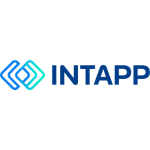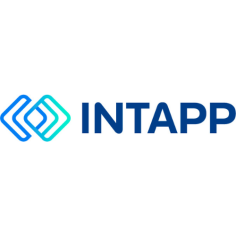Looking for true client intelligence? Consider retiring your generic CRM. Find out how with Intapp
At today’s professional and financial services firms, easy access to accurate, real-time client intelligence is a key competitive advantage. Still, some firms continue to rely on generic CRM systems that can’t deliver the data-driven insights their leadership and professionals need. By relying on legacy technology, with its limited functionality, late-adopting firms will continue to struggle — and increasingly fail — to deliver positive client experiences, improve their offerings, and identify and capitalize on new opportunities.
To stay competitive and grow their businesses, today’s leading firms are taking an industry cloud approach. With tailored, next-gen client intelligence systems that deliver persona-specific insights and other key capabilities, firms are improving their ability to meet client and employee needs, differentiate their services, and increase efficiency and effectiveness — even in the most volatile environments. This is holding true across industries, from accounting, consulting, and legal to private equity and investment banking.
Here are five ways that professional and capital markets firms are already benefiting from purpose-built client intelligence systems:
1) Centralize knowledge through automatic data capture
In partner-led firms, senior partners constantly develop and nurture client and investor relationships, as well as provide expertise on projects, matters, and engagements. Because they’re so busy, they don’t always have time to manually update records or files within their traditional CRMs — resulting in outdated and incomplete client data.
To achieve the best outcomes possible, partners need industry-specific solutions that were designed for their needs. For example, most office professionals use Microsoft Outlook and Teams throughout the workday. By investing in software that integrates with Microsoft products, firms can leverage applied AI to scrape signatures and invitations from Outlook emails, calendars, and meetings to automatically update their client intelligence systems. This way, they can simultaneously ease the data-entry burden on their partners and ensure that critical information is always centralized, current, and easily accessible.
2) Improve decision-making by integrating data in a single platform
Switching between applications to gather data on specific clients or projects is a frustrating, time-consuming experience for every user. Fortunately, there’s a better way: Industry-specific client intelligence solutions that harness internal data from across the firm — as well as from key third-party data sources like Equilar, Dun & Bradstreet, and S&P Global Market Intelligence— allow busy professionals to quickly access information in a central place and make better, data-informed decisions.
This accessibility to data is a major reason leading firms like Orrick, Herrington & Sutcliffe, an Am Law 200 firm, are transitioning from traditional horizontal CRMs to industry-specific solutions. As Laura Saklad, COO of Orrick, explains: “We want to harness the data that we have within our law firm and all these systems to make better decisions more quickly. We also want to push information out to the lawyers in a way that is synthesized, easily digestible, and doesn’t involve 100 hours of manual labor to get it done.”
3) Empower professionals with the insights they need, when they need them
The best client intelligence systems meet the needs of different users by providing various views of firm data. For instance, a user can easily prepare for a key client meeting by quickly pulling up all the information on that client on their dashboard. Another user can view how many real estate acquisitions were completed last year, or whether there are any market trends that would support a new line of business.
Advanced intelligence systems offer templated views, based on personas, that provide answers to users’ most frequently asked questions around clients, departments, products, and industries. Agile systems that can combine templates with a low-code platform allow for even greater efficiency, as users can easily pivot between data views to answer new questions as they arise.
“What’s most important and impactful from a manager’s perspective is being able to quickly configure the views and information sources that are relevant to an individual’s job and decision-making,” explained Michael Allison, COO of global investments firm Carlyle. Carlyle found so much value in its client intelligence system that the firm expanded its initial investment from one team to the firm’s entire enterprise.
4) Improve client service by transforming workflows
When news first broke about the run of withdrawals at Silicon Valley Bank, investment and advisory firms scrambled to respond to their clients and investors, and to conduct the complex task of identifying the impacted parties. For global investments firms, this meant searching through not only their own client lists, but also the lists of their portfolio companies. To ensure that their data was clean, and to quickly and efficiently send communications out to groups or subgroups, firm professionals had to manually pull lists from multiple sources, confirm contact and relationship information, and convert their data into standardized formats.
Those kinds of manual processes are tedious, time-consuming, and prone to human error. They become even more difficult when using generic CRMs, as these tools only track linear relationships rather than the nuanced, multidimensional relationships that form the foundation of professional and capital markets firms.
Contacting clients, investors, and other parties is infinitely easier and faster when firms use purpose-built client intelligence systems with self-maintaining contacts and a multi-dimensional relationship data structure. Allison believes this approach gives firms a competitive edge during major market events.
“Using tools where we can clearly see our relationships and our contacts across each of our three major lines of business, as well as our fundraising organization — and tools that allow us to quickly get communications out to folks — really makes handling these events much more seamless,” Allison said. “Being able to do that quickly and effectively lends to the credibility of the organization.”
5) Enable partners with the intelligence they need — wherever they’re working
To get the most from a client intelligence system, users must be able to access it both in and out of the office, while working remotely and on the road.
When the pandemic first hit, Carlyle was able to keep deals moving forward because of its industry cloud platform. “Once everybody was remote, tools like DealCloud became hugely important,” Allison explained. “It was a driver for being sure that teams were organized, and for knowing how they ran things.”
Similarly, Orrick aims to fully implement its own centralized, cloud-based client intelligence system, and to realize the tool’s many benefits as business travel continues to rebound.
“We love the idea of having information about clients that can be pushed out for lawyers who are your road warriors,” Saklad said. “When going to a client meeting, they can easily access critical information from their phones about who else in the firm is talking to these clients, or what major events have happened. The ability to put all of that in one place helps them prepare to have a much more holistic conversation.”
To thrive in these uncertain times, partners and leaders of professional services and capital markets firms need data more than ever before. It’s time to retire your generic CRM and embrace industry-specific, cloud-based client intelligence systems that incorporate applied AI, multi-relationship databases, and low-code platforms — so your firm can gain the insights needed to chart a course for a successful future.



